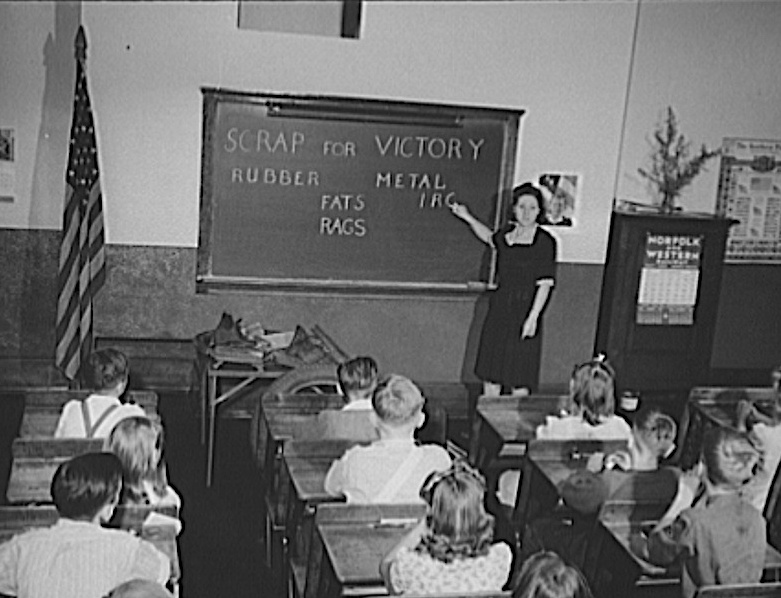 (c) Connecticut Explored Inc. Fall 2020
(c) Connecticut Explored Inc. Fall 2020
World War II began when Germany, Japan, and Italy tried to overtake other countries. The Nazis were in control of Germany. During the war, the Nazi’s imprisoned (in places called “concentration camps”) and killed millions of people just because those people were Jewish. Other countries joined together to fight back. More than 30 countries fought in World War II.
Most of the fighting happened outside the United States. But Japan attacked the United States on December 7, 1941. Japanese airplanes bombed military bases on Hawaii. More than 2,000 Americans died that day.
Americans in every state became part of the war in one way or another. Men became soldiers. Women became nurses and factory workers. Children got involved, too.
The Children’s Salvage Army was formed in August 1942. Children knocked on neighbors’ doors. They asked for old bits of metal. The metal could be turned into military equipment. A leaky bucket, The Hartford Courant reported, could be made into three bayonets. In Manchester, kids collected empty tin cans. They collected 65,095 tons of metal in seven months! Kids collected milkweed pods from roadsides and fields. Milkweed could be used to make life jackets for sailors and aviators.

School children being instructed how to collect scrap material for the war effort. Library of Congress
War was a confusing and stressful time for children. Thomas J. Gworek remembers:
The war started for me on a Monday morning in the second grade. I was eight years old. I remember children talking in whispers and then someone saying to me, “Did you hear? The Japanese bombed Pearl Harbor!” I had no idea what he was talking about. I gathered it was something serious and bad.
Shortly after I heard that my Uncle Al, who used to wrestle with me on the couch, was going to the Army. The great thing about it was that I could have all his model plane collection. Boy, was I happy.
Then things began to happen. I slowly realized that this war was about more than getting my uncle’s model airplanes.
Finally, the dark days of war seemed to lighten. Uncle Al came home. He never talked about the war. He would only say that he and his buddies had a job to do—a rotten, stinking job, and they did it.
The last thing I remember was the freeing of the concentration camps. In my mind I can still see those pictures in Life magazine. There were pictures of people so thin I wondered how they were held together. Their sad, searching eyes seemed too big for their heads. I knew then that this was a war we had to fight.
Learn More!
Read more about Connecticut at war at WhereILiveCT.org, chapter 6.
This story is adapted from “A Pint-sized View of War” by Walter Woodward, Winter 2014/2015, and “Pulling Together at Home in World War II” by Thomas J. Gworek, Spring 2010.
